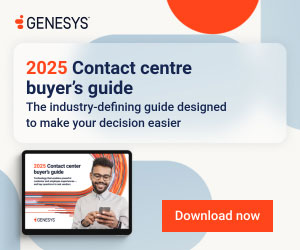Our expert panel reveal the best strategies for call routing success.
Give callers the option of selecting the agent they wish to speak to
Some inbound call-routing systems can give callers the option of selecting the agent they wish to speak to.
If that agent’s already on a call, he or she can see there’s a queue forming and react accordingly.
In some instances, providing callers with a PIN can also enable them to be routed through to a specific team.
Tag each call with an origin so agents can answer in the right language
Tagging each call with an indication of its origin can enable agents to answer appropriately – in the relevant language, for example.
If required, some systems can also play a short message to inform the agent – prior to connection – where the call has originated from.
Colour-coded information can let agents know how to respond
Some call-routing systems can colour code the inbound call notification. This way, the agent knows instantly how to respond.
Colour coding works well because agents can process this information faster than by reading a message.
Caller IDs can help to distinguish between priority and nuisance callers

Chris Key
Setting up call priorities can ensure that the caller ID is recognised as important and given priority.
On the flip side, applying negative routing of calls can send nuisance callers to a queue or voicemail.
With thanks to Chris Key, Managing Director at Hostcomm
Wallboard technology can work alongside the call-routing process
Wallboard technology can work alongside the call-routing process, providing a real-time view of your contact centre environment.

Daniel May
Contact centre management can be given the expected wait time before a customer call will be answered and agents can even view their live queue of customers.
When run in conjunction with dynamic routing, if services drop below a certain level (for example, wait times exceed the required limit) then ‘back-up’ agents can be utilised and pulled into the queue to maintain required service levels.
With thanks to Daniel May, Technology Consultant at Business Systems (UK) Ltd
Understand why contact is being made
Before researching call-routing strategies, understanding why contact is being made, what the caller requires, and what you require from the contact is paramount.
If you have this information, it is easier to analyse what the best contact routing options are for your business.
Manage incoming calls through a simple “first in first out” queue
Managing incoming calls through a simple “first in first out” queue – or queue-based routing – is widely used in high-volume, low-value contacts.
It will give a contact centre the most efficient operation but will fall short in terms of customer service and revenue objectives.
Look at who the last advisor was and divert the call to them
IVR and automated call distribution (ACD) systems often use data-directed routing.
The caller is identified – through IVR – followed by the ACD system scanning a database – most likely a CRM system – to influence who should take the call.
A common example would be for the system to look at who the last advisor was and divert the call to them, or flag anything that could influence who takes the call, such as missed payments or special requirements.
Omni-channel routing brings together all methods of contact
Living in a digital world, where everyone is constantly ‘online’, more and more people are using social media to contact companies.
Omni-channel routing brings together all methods of contacting a company, such as voice, email, text, social media, SMS or web chat.

Ian Smith
Contact might start off as a tweet, followed by an email and then a phone call; all methods of interaction should be logged and visible to advisors so they are aware of contact history and are up to speed with the conversation.
It also enables enquiries to be solved via a smartphone application, without any advisor intervention.
With thanks to Ian Smith, Principal Consultant at Aspect Software
Configure your IVR to achieve skills-based routing
Skill-based routing can ensure that your callers are greeted by the agent with the best skills for the call, in the shortest time possible.
To achieve this you can:
- Configure options in the IVR
- Provide different numbers for different products or services that will allow you to route the calls accordingly
Dedicated numbers can help agents build personal customer relationships
Customers and agents often need to engage in multiple communications and follow-up calls in order to achieve the end goal.
By allocating a dedicated personal direct dial number – or Caller Line ID – to each agent, you can ensure that any return calls are routed and queued directly to that agent.
Plus any rescheduled outbound calls to the customer will display the same personal Caller Line ID for that agent; increasing answer rates, building on that personal relationship and helping to get to the final call goal faster.
CRM data should be factored into the routing process
Another strategy for call routing success is intelligent or data-directed routing – where CRM data is interrogated and factored into the routing process.

Mike Donohue
For example, a customer with an outstanding delivery may be routed to the despatch department, or a customer with an active complaint could be routed straight through to a supervisor.
Priority or VIP customers can also be identified from their number and routed appropriately.
With thanks Mike Donohue, Sales Director at Magnetic North
Reduce the need to transfer calls across the contact centre
There are several ways to reduce the need to transfer calls in the contact centre, including using different telephone numbers to identify why customers are calling; using IVR filters to collect key routing information before the call is answered and utilising intelligent routing to identify the caller by their phone number and their likely enquiry.
Ensure the agent has got the customer’s information to hand
Call-routing systems are only as good as the agent who takes the call as far as the customer is concerned – so ensure the agent has got the customer’s information to hand.
Provide a screen pop giving call history on an uncluttered desktop – and make sure that they know what they are doing (sounds obvious, but you’d be surprised!).
Get on top of awkward IT systems and clean up messy desktops
Many contact centres are now handling multi-channel conversations, which often mean agents have to use several systems to complete one activity.

Ken Reid
The customer doesn’t care – they want a fast, personal, informed service, whatever is going on behind the scenes. So get on top of awkward IT systems and clean up messy desktops to give your agents the best chance of successful call resolution.
They shouldn’t be flicking through endless screens – it should all be integrated so when that customer is routed through they get great service.
With thanks to Ken Reid, Director of Proposition and Product at Rostrvm Solutions
Build your call-routing model around performance-based metrics
Our call-routing model is built around performance-based routing metrics. This means that we systematically assess agents that perform best against campaign KPIs and then dynamically route calls to those agents first.

Richard Pinnington
Not only does the client get a more proficient agent handling their calls, but this approach also provides an incentive for agents to improve; since they have access to the metrics and can see precisely where their performance ranks against other agents.
The better they perform, the more calls that are routed to them.
With thanks to Richard Pinnington, Head of UK&I Marketing at LiveOps UK
Skills-based routing to the most appropriate agent
Skills-based routing ensures that incoming calls are assigned to the most appropriate agent to deal with the call.

Jonathan Gale
For instance, route international callers to agents speaking their language and provide specialist support for specific products.
This will help resolve service calls more quickly, maintaining customer satisfaction and agent morale.
With thanks to Jonathan Gale, CEO at NewVoiceMedia
A mixture of several strategies can help you to harmonise your call routing
There is not just one correct routing strategy.
Even within a specific company, there may be several different routing strategies that can be harmonised to provide the best experience for customers.
Deliver the interaction to the best available resource across any location
Multi-site routing can allow you to treat all your agents as a single pool of available resources based on skills and deliver the interaction to the best available resource across any location.
Service-objective routing will try to find the best possible outcome
Intelligently analyse your service levels to make real-time decisions on the most efficient routing path, balancing service levels across predefined queues.
If you are understaffed, service-objective routing will try to find the best possible outcome.
Cost-based routing can help you reduce operational costs
Evaluate employee costs when deciding who is best to handle customer requests.
If you are using multiple outsourcers, cost-based routing can help you reduce operational costs.
Make sure your call routing takes your WFM schedule into account

Stefan Captijn
Make sure your routing takes into account the workforce management schedule, including weekly and holiday schedules and schedule overrides.
This puts the operations team in control, helps reduce unplanned overtime and ensures agents stick to their break schedules.
With thanks to Stefan Captijn, Senior Director Product Marketing at Genesys
Link your routing strategy to your personal business priorities
Depending on your own business, the strategy for routing a particular call may differ.
Sometimes it is better to answer a call quickly, regardless of the level of skill of an agent (such as for reporting credit card fraud), rather than using time-consuming options, such as IVR menus, before the caller is passed to an agent.
The ability to identify a caller and associate them with the account information you have available will be useful in deciding where to route the call. This also offers the advantage of potentially reducing the handling time of calls that reach agents.
Regularly review the need for self-service options
Regularly review your ‘call reason’ reporting and consider whether you are able to offer self-service options for any of those reasons.
Once these are in place, you can have additional routing options that can deliver the caller’s requirement faster without needing an agent.
Before considering any self-service channels, remember it is important to identify the right transactions if you want people to use these options.
Turn your inbound traffic into outbound traffic
Due to the unpredictable nature of inbound call traffic, consider offering callers the option of receiving a call-back later when inbound traffic has reduced. An added benefit of this is that it evens out your occupancy levels.
But be wary of disappointing the caller further by not delivering on the promised call-back.
Measure success against short- and long-term factors
Ensure you can effectively measure the success of your strategy and any changes you make to it; a good CRM system or call logging application that records customer reason for calling will be key.

Steve Siddall
When measuring success, don’t focus only on immediate information such as average speed of answer and average handling time, include long-term factors such as customer satisfaction and churn.
With thanks to Steve Siddall, Contact Centre Specialist at Noble Systems
Your longer-term strategy should not be limited to voice
While voice is still the primary channel used by consumers, there’s a growing requirement to support channels such as web, mobile, live chat and social.
The longer-term strategy should therefore not be limited to voice and needs to ensure a consistent level of service across all channels.
Self-help can deflect low-value interactions away from the contact centre
Intelligent knowledge-based self-help can deflect low-value interactions away from the contact centre and at the same time empower agents to deliver a quality first point of contact resolution.
While traditional skills-based routing still has an important place in contact centres, the combination of increased customer expectations and the drive to improve efficiency suggest that businesses also need to embrace a more dynamic and comprehensive routing strategy for their interactions with their customers.
Identifying customers early in the call opens up lots of opportunities
Identifying customers early in the call opens up lots of opportunities. Taking intelligent call routing a stage further, organisations can also now build in the intelligence to help make data-directed routing choices about customer calls based on their current status.

Adam Faulkner
For example, a credit card customer might call with an inquiry, but if their account is overdue, this could get flagged up during the initial ID and the contact routed first to the payment collections function.
Integrating the initial IVR ID process with current customer data can provide a powerful solution for businesses.
With thanks to Adam Faulkner, Founding Director at Sabio
Introduce automated call-backs to avoid missing sales opportunities
By introducing automated call-backs, you can push real-time information to your agents on abandoned calls in queues, for quick call-backs and no missed sales opportunities.
Give callers an estimated ‘queue time’ rather than ‘queue position’

Simon Beeching
Give callers an estimated ‘queue time’ on hold, rather than ‘queue position’.
This will help callers to stay on hold, as they will have an idea of the size of the call centre and how quickly their call will be answered.
With thanks to Simon Beeching, Director at Syntec
How do you ensure the success of your call-routing strategies?
Author: Megan Jones
Published On: 21st May 2014 - Last modified: 18th Oct 2024
Read more about - Technology, Alvaria, Business Systems, Call Routing, Genesys, Hostcomm, Intrado, Jonathan Gale, Ken Reid, Lifesize, Noble Systems, Rostrvm, Sabio, Syntec, Vonage
















